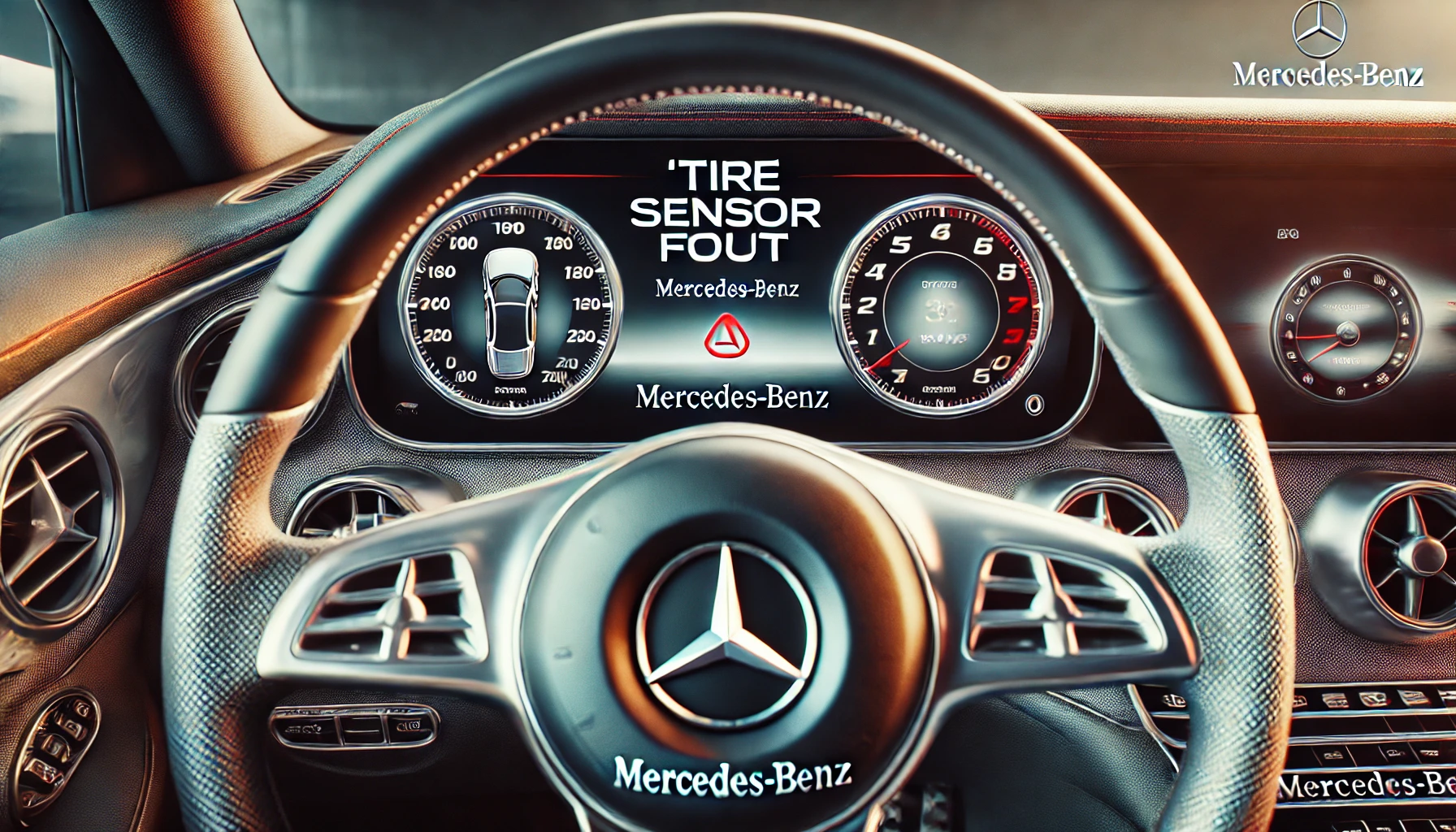
Mercedes-Benz vehicles are equipped with a sophisticated Tire Pressure Monitoring System (TPMS), which helps ensure that tires are properly inflated for optimal performance and safety. If you see a Tire Sensor Fault warning on your dashboard, it means that the system has detected an issue with one or more tire sensors. Fortunately, fixing a tire sensor fault is often a straightforward process. This guide will cover the common causes of a tire sensor fault in Mercedes-Benz vehicles and provide steps to resolve it.
Common Causes of Tire Sensor Fault in Mercedes-Benz Vehicles
Several factors can cause a Tire Sensor Fault in your Mercedes-Benz:
- Low Tire Pressure: The most common reason for a tire sensor fault is low tire pressure. The TPMS system alerts you when the tire pressure falls below the recommended level, which can cause the sensor to trigger a fault.
- Damaged or Faulty Sensors: The tire sensors inside each tire can become damaged over time or during tire changes. A damaged sensor will fail to send accurate data to the TPMS, leading to a fault warning.
- Weak Sensor Battery: TPMS sensors are powered by small batteries, which typically last 5 to 10 years. If a sensor’s battery is weak or dead, it can trigger a fault.
- Radio Interference or Software Glitch: Radio frequency interference or a software malfunction can sometimes cause the TPMS system to send false fault messages.
- Recent Tire Service: If your Mercedes-Benz’s tires were recently rotated, replaced, or serviced, the TPMS sensors may not have been recalibrated properly, which can result in a fault message.
Steps to Fix Tire Sensor Fault in Mercedes-Benz Vehicles
If your Mercedes-Benz is displaying a Tire Sensor Fault, follow these steps to troubleshoot and resolve the issue:
1. Check Tire Pressure Manually
The first step is to manually check the pressure in all four tires using a tire pressure gauge. You can find the recommended tire pressure for your Mercedes-Benz vehicle in the owner’s manual or on a sticker inside the driver’s door.
- Inflate any under-inflated tires to the recommended pressure.
- After adjusting the tire pressure, drive your vehicle for a few miles to allow the system to recalibrate. Often, this will resolve the issue, and the Tire Sensor Fault warning will disappear.
2. Reset the TPMS System
If adjusting the tire pressure doesn’t clear the fault, you may need to reset the TPMS system. Here’s how you can reset the system in most Mercedes-Benz models:
- Turn the ignition to the On position without starting the engine.
- Use the controls on your steering wheel or the infotainment screen to navigate to Vehicle Settings.
- Select Tire Pressure Monitor and then choose Reset.
- Confirm the reset and drive your vehicle for about 10-15 minutes at a speed of at least 20 mph to allow the system to recalibrate.
If successful, the Tire Sensor Fault message should disappear.
3. Inspect Tire Sensors for Damage
If resetting the TPMS doesn’t resolve the issue, inspect the tire sensors for damage. The sensors are located inside the tire, attached to the valve stem. Damage to the sensor can occur during tire changes or while driving on rough roads.
If a sensor is damaged, it will need to be replaced. Replacing the sensor requires specialized tools, so it’s best to visit a Mercedes-Benz dealership or a certified mechanic for the repair.
4. Replace the Sensor Battery
Each TPMS sensor is powered by a battery that, over time, may weaken or die. Unfortunately, the sensor’s battery cannot be replaced separately; the entire sensor must be replaced.
You can have the sensor replaced at a Mercedes-Benz service center. Once the new sensor is installed, the TPMS system will need to be recalibrated to ensure accurate tire pressure monitoring.
5. Check for Software Updates
Sometimes, a Tire Sensor Fault can be caused by a software issue in your Mercedes-Benz. The manufacturer regularly releases software updates to fix bugs and improve system performance, including the TPMS.
Visit your local Mercedes-Benz dealership to check if there are any software updates available for your vehicle. If an update is installed, it may resolve the TPMS fault.
Preventing Future Tire Sensor Faults
- Regular Tire Pressure Checks: Make it a habit to check your tire pressure once a month, especially during temperature changes, as fluctuating temperatures can affect tire pressure and trigger false warnings.
- Handle Tire Changes with Care: Ensure that technicians handle your tire sensors carefully during tire changes, rotations, or other maintenance to avoid damaging the sensors.
- Routine Maintenance: Include TPMS sensor checks during regular vehicle maintenance to ensure that the sensors and their batteries are functioning properly.
- Keep Software Up to Date: Stay current with your vehicle’s software updates to prevent any potential glitches in the TPMS system.
Conclusion
A Tire Sensor Fault in a Mercedes-Benz vehicle is often a minor issue that can be resolved with a few simple steps. Start by checking your tire pressure, resetting the TPMS system, and inspecting the sensors for damage. If the issue persists, visiting a Mercedes-Benz-certified service center to replace the sensors or update the vehicle’s software is the best course of action. Regular tire maintenance and sensor care will help prevent future issues, ensuring your Mercedes-Benz performs safely and reliably on the road.
